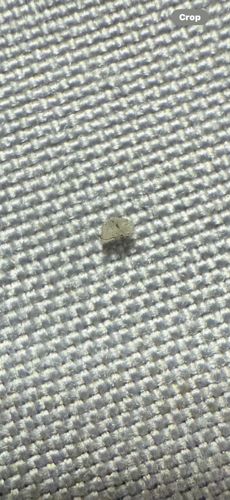Case-bearing Clothes Moth Larva
Scientific Name: Tinea pellionella
Order & Family: Lepidoptera, Tineidae
Size: Larvae are typically 1/8 to 1/2 inch (3-13 mm) long.

Natural Habitat
Indoors, particularly in dark, undisturbed areas such as closets, attics, storage chests, and under furniture, where natural fibers are present.
Diet & Feeding
Keratin-containing materials, including wool, fur, feathers, hair, felt, upholstered furniture, and occasionally synthetic fibers blended with natural ones. They also feed on lint and dust bunnies.
Behavior Patterns
The larva constructs a silk case around itself, incorporating fibers from its food source, which camouflages it. It carries this case wherever it moves, extending its head and legs from one end to feed. When disturbed, it can retreat fully into its case. They are slow-moving and prefer dark, secluded environments.
Risks & Benefits
Risks include significant damage to textiles, clothing, carpets, and other household items made of natural fibers. They do not bite or transmit diseases to humans. There are no known direct benefits, but as detritivores, they contribute to the breakdown of organic matter.
Identified on: 11/18/2025